- You are here:
- Home »
- Bike Accessories
Category Archives for Advice

Benefits of Using Clipless Pedals
For every type of bicycle usage such as a mountain bike or a road bike, there is an optimal pedal system. Pedal systems are divided into three umbrella categories, which are: Flat pedals, clip-on pedals, and clipless pedals. Clipless pedals have become increasingly popular in the last ten years, due to a concerted research and development effort on the part of manufacturers, to innovate and improve how bikers ride.
As bikers, we get to take advantage of the new and improved hardware, created by a competitive market demand, and, for those, looking for a concise and consistent way to better their ride, the benefits of using clipless pedals are easily seen.
The Clipless Bicycle Pedal
A clipless bike pedal does, in fact, use a “clip.” If the pedal was called, an “easy-release pedal,” it might make more sense. “Clipless” refers to the design of a clip-on bike pedal, which predates that of the clipless system.
Clipless System Impetus
Before the clipless system for shoes was conceived, the clip-on pedal system was the standard amongst avid bikers and professionals and is still in use today. This pedal system had several downfalls, as did some preliminary innovations on it, which eventually led to the advent of the modern clipless pedal design.
The clip-on system utilizes a “cage” that is attached to the bike pedal and surrounds a rider’s toe or forefoot, either with a tight hard shell or with an adjustable strap. One downfall of this system was seen in off-roading when a rider’s foot rattled and bounced inside the toe cage, reducing effort efficiency.
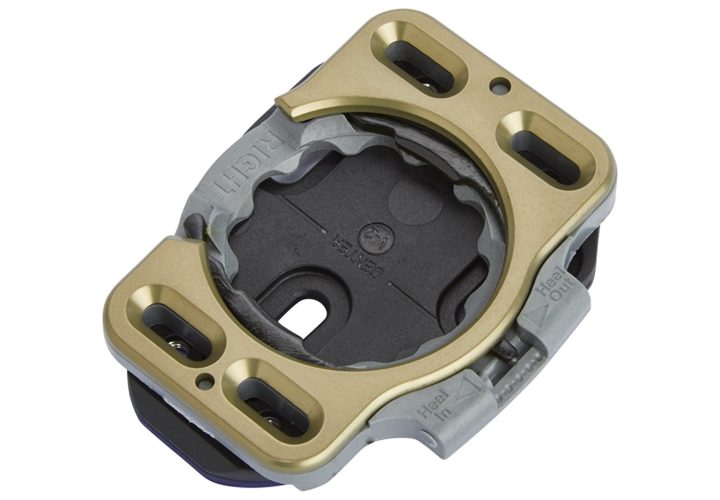 However, the biggest detriment was seen in an accident, when a rider could not remove their feet and shoes from the pedal strap and, as a result, suffered greater injuries. The early predecessor to the modern clipless pedal was first invented as a lever system. A rider had to physically release a pedal lever by hand, which, in a crash, was nearly impossible to accomplish and earned it a deathly reputation among bikers.
However, the biggest detriment was seen in an accident, when a rider could not remove their feet and shoes from the pedal strap and, as a result, suffered greater injuries. The early predecessor to the modern clipless pedal was first invented as a lever system. A rider had to physically release a pedal lever by hand, which, in a crash, was nearly impossible to accomplish and earned it a deathly reputation among bikers.
Riders needed a way of connecting their feet firmly to the pedals thus enabling their hamstrings to pull upwards through the pedal stroke as well as a safety feature, allowing a rider to disconnect their feet from the pedal, in an instant. Though it was first conceived in 1895, the clipless pedal did not gain widespread recognition and acceptance until 1985, when Bernard Hinault became the first biker to ever win the Tour de France using a clipless pedal system.
Using a Clipless Bike Pedal
A clipless bike pedal works by implementing a cleat on the ball of the bike shoe’s sole, which locks into a clip located on the bike’s pedals. The clips are adjustable for firmness, but allow the biker’s feet to maneuver freely. To unlock the shoe’s cleat from the pedals bracket clip, a biker only has to swing their heel away from the bike and the spring operated clip unlocks instantaneously.
 These are called “clipless” since the releasing mechanism is hands-free. However, if it makes you feel better to call them “locking pedals” or “lock and release pedals” feel free. The point is, clipless pedals connect a rider’s feet securely to the bike’s drive train and unlock them from the pedal on command—in an instant. This is why they are the modern standard for bikers everywhere. Once you switch over to clipless pedals, there is no substitution.
These are called “clipless” since the releasing mechanism is hands-free. However, if it makes you feel better to call them “locking pedals” or “lock and release pedals” feel free. The point is, clipless pedals connect a rider’s feet securely to the bike’s drive train and unlock them from the pedal on command—in an instant. This is why they are the modern standard for bikers everywhere. Once you switch over to clipless pedals, there is no substitution.
Benefits of Using Clipless Pedals
Just about every single aspect of your ride will be benefited by using clipless pedals. They are perfect for riders who use their bike as a means of heavy transportation, recreation, or any other type of consistent use. All clipless pedals require a specialized shoe and a compatible cleat, which features a hard sole design, eliminating pressure from the cleat on the ball of the rider’s foot.
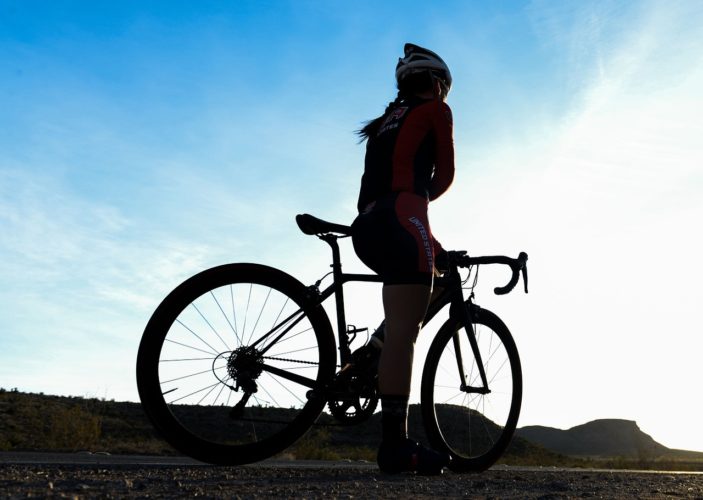 In less than a day, most first-timers have the locking-in and out action in their muscle memory and can do it smoothly, without having to look down. Specifically, the benefits of using clipless pedals are seen in a biker’s improved safety, more efficient effort expenditure, and greater handling power to provide overall greater comfort when for bikers when riding.
In less than a day, most first-timers have the locking-in and out action in their muscle memory and can do it smoothly, without having to look down. Specifically, the benefits of using clipless pedals are seen in a biker’s improved safety, more efficient effort expenditure, and greater handling power to provide overall greater comfort when for bikers when riding.
Safety & Control
If you have ever been out biking in a rainstorm with flat pedals, you know how dangerous it can be to have your feet slipping while riding at speed. Clipless pedals connect your feet firmly with the bike, making it virtually impossible for one’s foot to slide off the pedal, causing a catastrophic incident.
With strap-on pedals, one must physically loosen the strap to release their toe, which is not safe or timely in the event of a sudden stop or unforeseen obstacle. Riders do not have this problem with clipless pedal systems, as the action of unlocking one’s foot from the pedal becomes innate and subconscious to the rider.
The clipless design allows riders to keep their hands on the handlebars at all times. By connecting the feet to the pedal and enabling both hands to remain on the bars, clipless pedals exponentially increase a biker’s handling and control of their vehicle.
Efficiency, Power & Acceleration
Clip-on pedal systems became popular because they allowed riders to use their hamstring on the upward pedal stroke, but the toe-cage and strap design was not efficient for directing force through the drive train. The hard sole shoe design of clipless pedals acts to disperse the force evenly across the top of a rider’s foot on the up stroke, which prevents joint damage and tendon strain.
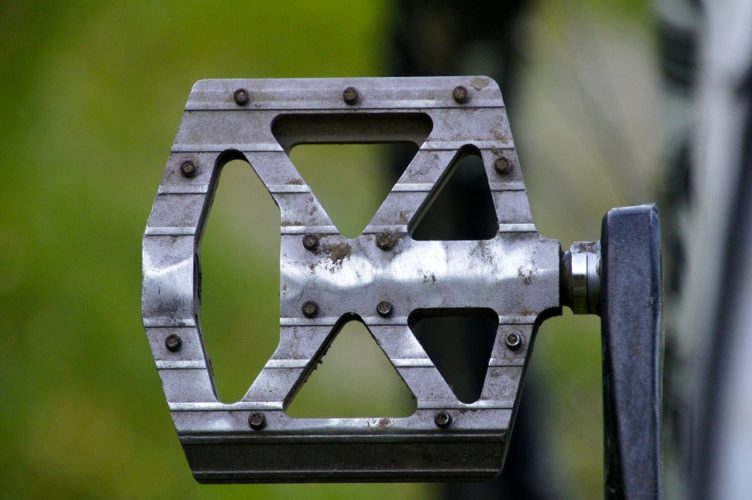 With the classic flat pedal, half of the biker’s potential energy is left dormant, as they are only able to exert a propelling force on the pedals down stroke. By attaching one’s feet to the bike’s pedals, every rotation of the pedals is half as taxing to your body. Since the rider is able to implement strength from more muscle groups, their body is working more efficiently, which results in a nearly exponential increase of acceleration.
With the classic flat pedal, half of the biker’s potential energy is left dormant, as they are only able to exert a propelling force on the pedals down stroke. By attaching one’s feet to the bike’s pedals, every rotation of the pedals is half as taxing to your body. Since the rider is able to implement strength from more muscle groups, their body is working more efficiently, which results in a nearly exponential increase of acceleration.
Confidence & Consistency
Finally, the improved safety, control, power, and efficiency result in greater confidence in one riding, as well as a greater consistency of usage. For example, if your car is on its last legs and every ride might be its last, you don’t exactly wake up looking forward to driving it. On the other hand, if you have a Tesla in the driveway, you probably look forward to driving it.
 When you know that you have outfitted your bike with the right gear including cycling shoes to enable the best ride possible, it becomes a joy and point of pride. The practical and physical benefits of using clipless pedals work to prevent improper body use while riding encourage you to keep up with the consistency of your biking. If you are looking to take your ride to the next level of skill and fun, it is time to experience the benefits of using clipless pedals.
When you know that you have outfitted your bike with the right gear including cycling shoes to enable the best ride possible, it becomes a joy and point of pride. The practical and physical benefits of using clipless pedals work to prevent improper body use while riding encourage you to keep up with the consistency of your biking. If you are looking to take your ride to the next level of skill and fun, it is time to experience the benefits of using clipless pedals.
Feel free to leave comments and question and remember—always wear a helmet!

Why You Should Wear Indoor Cycling Shoes
Biking for fun is great but, once it becomes a regular part of your daily life, it is time to invest in the gear that will enable your best performance in terms of longevity. For those who enjoy indoor spinning or cycle training, improper footwear can cause short-term discomfort and long-term physical repercussions on your muscles, joints, and tendons.
For this reason, serious cyclists choose to use indoor cycling shoes for their training. If you are not fully aware of the reasons why you should wear indoor cycling shoes when training, this guide will serve to outline the major benefits and features of indoor cycling footwear.
Indoor vs. Outdoor Cycling
There are several significant differences between indoor cycling and outdoor cycling that determine the features that are required for their gear. When it comes to a cyclist’s footwear, the right shoes make a substantial difference in the ease, efficiency, and consistency of your ride. Before we get into the specific features and benefits of indoor cycling, let’s outline the key differences between the two styles of riding.
Outdoor Cycling
Ideally, for most bikers, time is spent riding in the beautiful outdoors. After all, the greatest benefit of biking regularly is the bond that is formed between the ground and your body, as you ride the waves of the landscape. The footwear that a rider chooses will depend completely on the type of outdoor riding that they engage in.
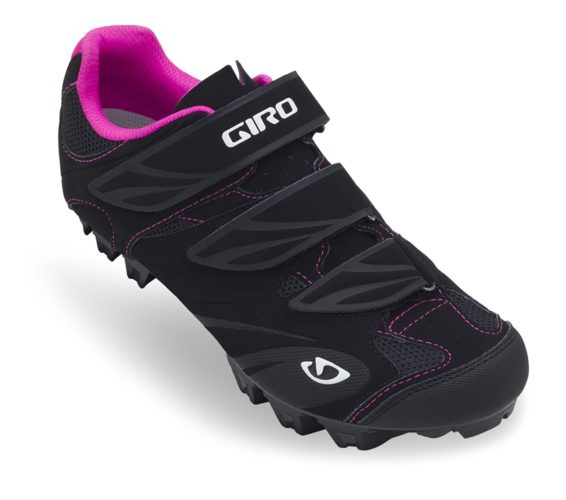 Trail riding and mountain biking will require a very different style of cycling shoe than that of urban commuters and road cyclists. The cycling shoe that you use outdoors must be designed to withstand environmental factors, such as rain, debris, and temperature fluctuations. Also, riding on the road or trail requires an ability to dismount the bike for many reasons, such as accidents and stop lights.
Trail riding and mountain biking will require a very different style of cycling shoe than that of urban commuters and road cyclists. The cycling shoe that you use outdoors must be designed to withstand environmental factors, such as rain, debris, and temperature fluctuations. Also, riding on the road or trail requires an ability to dismount the bike for many reasons, such as accidents and stop lights.
Many outdoor cycling shoes are clipless (cleats) or have some sort of strap-in feature that is easily disconnected by the rider’s feet. Cycling shoes, for outdoor riding, will usually feature a specialized cleat and pedal system, which does not inhibit one’s ability to walk normally in the shoe. Some road cycling and racing shoes will be acceptable for indoor uses, but indoor cycling shoes are not generally intended for outdoor use.
Indoor Cycling
Indoor cycling has gained popularity in recent years, mostly in the form of spin classes. The most obvious, and definitive difference between outdoor and indoor cycling, is movement. When cycling indoors, the rider is completely stationary the entire time, which has a significant impact on the design of footwear intended solely for indoor use. Though they offer less overall versatility, indoor cycling shoes are generally priced around $100, as opposed to their multi-hundred dollar outdoor counterparts.
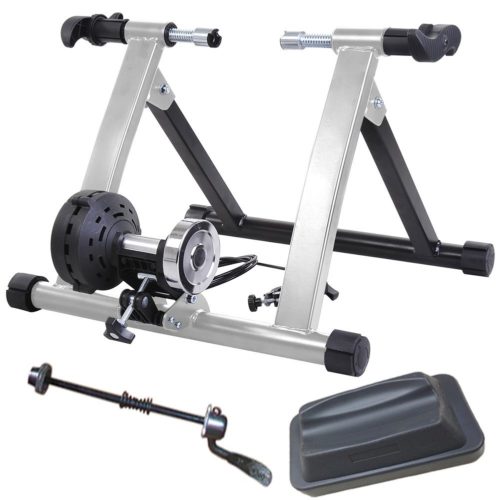 Indoor cycling, or spinning, either uses a spin cycle machine or a cycling turbo trainer, which connects to the rear wheel of the cyclist’s own bicycle. The latter is the overwhelmingly preferred method of cycle training for those who bike regularly. Indoor cycling is not only a fantastic form of cardiovascular exercise but also the best way for bikers to train and keep up with their physical conditioning in winter months and harsh weather when outdoor cycling is not preferable.
Indoor cycling, or spinning, either uses a spin cycle machine or a cycling turbo trainer, which connects to the rear wheel of the cyclist’s own bicycle. The latter is the overwhelmingly preferred method of cycle training for those who bike regularly. Indoor cycling is not only a fantastic form of cardiovascular exercise but also the best way for bikers to train and keep up with their physical conditioning in winter months and harsh weather when outdoor cycling is not preferable.
Recently, indoor biking has been given a big upgrade, by implementing smart technology into turbo cycling trainers. Smart turbo trainers can link up with programs like Zwift, which puts cyclists into a virtual biking community. Wireless connectivity allows the smart turbo trainers to link up with other cyclists from across the globe, with whom you can engage in races and rides on a video-game-like interface.
Riders can control the trainer remotely from a smartphone, tablet, or laptop while viewing their race on a screen in front of them as if they were actually there. These smart trainers also shift the pedaling resistance in conjunction to the terrine of any virtual map, giving a life-like outdoor sensation to your ride.
This technological innovation has changed the way that bikers and cyclists engage in the sport from an indoor environment and has created a more communal, fun atmosphere in which to train and exercise at home or the gym. However, in order to mitigate fatigue, cyclists should wear indoor cycling shoes to take full advantage of the benefits that indoor cycling has to offer.
Indoor Cycling Shoes
Cyclists use specifically designed shoes to ensure their safety while riding and to improve their physical performance while riding. Cycling shoes are designed to attach to the bike’s pedals, using a clipless cleat system or a clip-in pedal system.
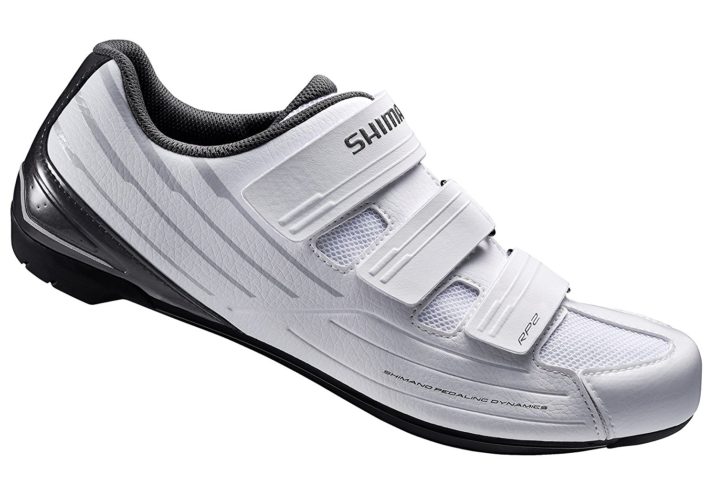 There is a wide variant in the specific make of any particular cycling shoe, depending on the type of riding it is designed for; however, these shoes are all meant to allow the rider to pedal with greater power and efficiency while mitigating a rider’s overall fatigue.
There is a wide variant in the specific make of any particular cycling shoe, depending on the type of riding it is designed for; however, these shoes are all meant to allow the rider to pedal with greater power and efficiency while mitigating a rider’s overall fatigue.
Indoor Cycling Shoes Features & Benefits
Shoes designed for indoor cycling will benefit the user in several ways that may not be evident at first. These shoes are made specifically for the kind of environments that are typical of spin classes and gymnasiums and provide exceptional support and security while you’re engaged in a long-duration ride. Here are a few of the defining features and benefits that outline why you should wear indoor cycling shoes.
● Pedal Support
Indoor cycling shoes feature a rigid upper and a hard sole. The rider’s foot is meant to fit snuggly without any slide within the shoe to enable the most efficient power transfer between pedal strokes. Unlike many outdoor cycling shoes, which feature a semi-flexible sole, indoor cycling shoes benefit the stationary rider with a solid construct, providing maximum support and stability for a rider’s foot.
● Breathability
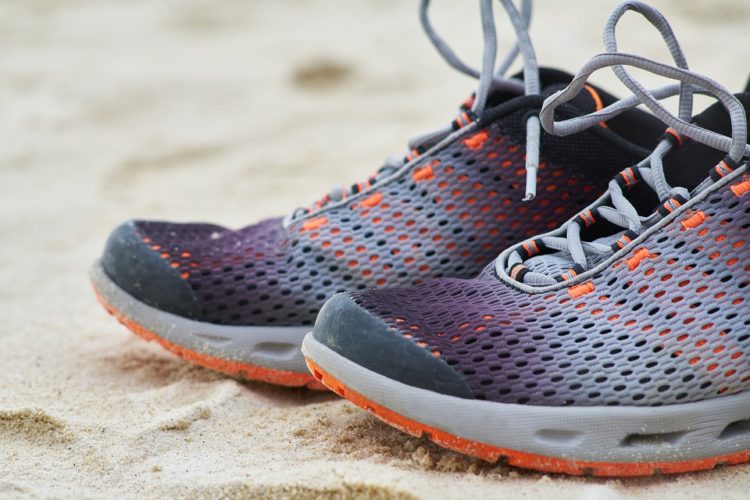 Unlike outdoor cycling, there are no natural elements or obstacles to contend with in the gym or the comfort of your own home. Therefore, the paramount concern of an indoor cycling shoe is with regards to its breathability.
Unlike outdoor cycling, there are no natural elements or obstacles to contend with in the gym or the comfort of your own home. Therefore, the paramount concern of an indoor cycling shoe is with regards to its breathability.
Indoor cycling shoes are designed to feature the maximum amount of structural support, sole rigidity, and material breathability. Ensuring adequate air flow and perspiration diffusion while cycling requires specific design features, as opposed to that of outdoor shoes.
● Slip-Resistance
Outdoor cycling shoes are designed to transition from one’s bike onto the sidewalk or soil. Indoor cycling shoes have only one terrain shift—from the bike to the gym floor. To keep users from slipping and sliding around, indoor cycling shoes are often designed specifically to provide excellent grip on smooth tile surfaces and solid wood floors without scratching or scuffing the flooring material.
● Body Alignment
 Indoor cycling entails a rider to remain in a single location while pedaling for an extended period of time. Unlike outdoor cycling, this does not necessitate quite as much give and take in a riders footing, which is why indoor cycling shoes are made for the maximum alignment support.
Indoor cycling entails a rider to remain in a single location while pedaling for an extended period of time. Unlike outdoor cycling, this does not necessitate quite as much give and take in a riders footing, which is why indoor cycling shoes are made for the maximum alignment support.
These shoes ensure that riders do not place undue stress and exertion onto joints muscles and tendons while engaged in prolonged cycling.
● Up-Stroke Pedal Power
Like all connective cycling shoes, indoor cycling shoes’ biggest benefit is the added power in a rider’s up-pedal-stroke. With flat pedals, a rider has no ability to use their up-stroke for pedaling power. The power and energy efficiency that one gains from connective pedal footwear is one of the biggest benefits regarding why you should wear indoor cycling shoes.
Please feel free to leave comments and questions.
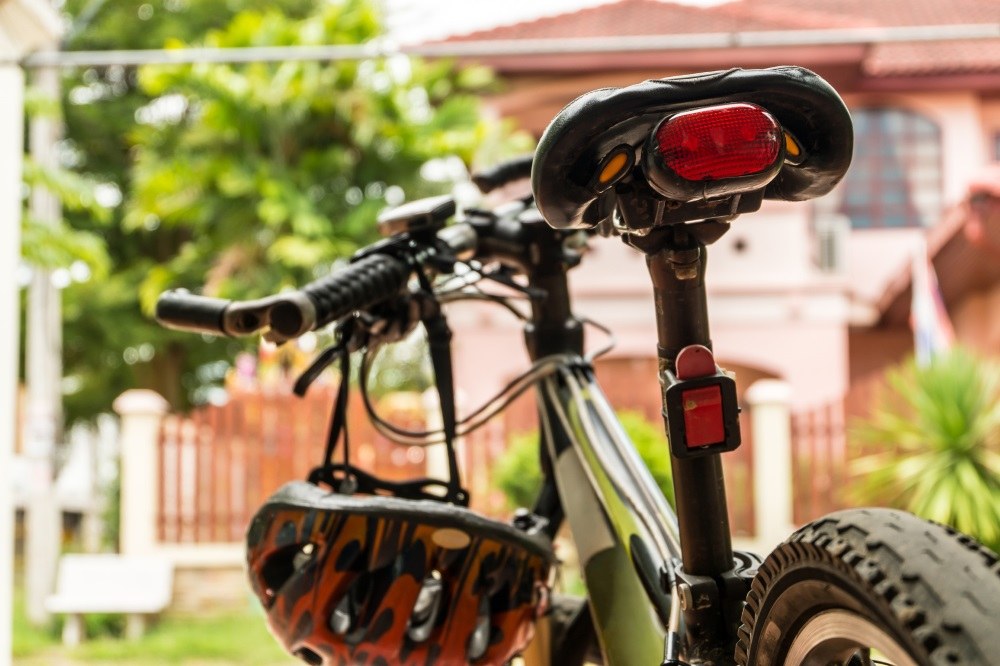
How To Make Your Bike Lighter
Are you looking forward to having a light bike? Getting the lightest bike is the dream of many cyclists in the world. The reason for making the bike lighter are evident, and many people believe that using a light bike will make them move faster. You will run fast on the hills without any additional weight.
Multiple studies have shown that dropping 1 Ib. will save you 1 second when riding your bike when going up a hill. The weight will also make the difference if you are in a race.
There are some ways and procedures that you can follow to make your bike light. Some of this means that to make your bike lighter, you need to replace the heavy parts.
Get the lightest frame for your bike
The frame is the base and the most expensive part on your bike. Buying a new frame for your bike means you are, essentially, buying a new bike. When shopping for a frame, there are frames that you should consider due to the light weight. Some of these frames are:
- Carbon-fiber
- Titanium
- Aluminum
- Steel
This is the hierarchy that you should follow. The carbon fiber is the lightest for your bike—it is excellent and also efficient.
Switch your wheels
Changing your bikes wheel is the next thing that you should consider. Affix the lightest wheels and ensure that they will be efficient on the bike. You will not only reduce the weight of the wheels but also the aerodynamics.
Lower the spokes and the wheels will become light. Ensure that it is an upgrade and efficient, and not a poorer quality, even if lighter. You can use the following wheels:
- Carbon-fiber wheels
- Tubular wheels
- Aero wheels
Use the proper tires
The tires of a mountain bike will kill you if you are going up a hill. Consider tires that are light and that have less friction. They should accommodate light rails whenever you are riding. The slick is also a good choice for trails such as footpaths.
Switch to double crank in the front gear
If your bike has three cranks, you should consider buying a crank that is compact. A compact crank will give you a two-chain ring, rather than the three-ring one. With the two rings, there will be less to work on the gear, and you will reduce the weight.
Pick aerodynamic handlebars
Carbon fiber, aerodynamic bars and the triathlon bars will help to minimize the weight of the bike. The vibration in your hands when riding will no longer be felt, and you will have a smooth time riding it. You should keep in mind that carbon fiber can be brittle if you crash, so you should handle it with a lot of care.
Remove unessential hardware
There are several hardware options mounted on the bike, and they are not necessary. Some, such as mud flaps, pumps, decorations, reflectors, lights, saddlebags, among others, should be eliminated on the bike. The will shave some weight, hence making the bike lighter.
Wear aerodynamic helmet and shoes
Aerodynamic shoes and helmets are for racers. Although they are quite expensive, they will help in reducing the weight when riding your bike.
Another major thing that you can do is swapping the pedals for the racing pedals. The racing pedals are designed to make the bike light for actual racing.
Trimming you bike
Trimming your bike can help you shave many grams from the bike. The best way that you can trim your bike is by:
- Ripping off the seat cover and drill holes out of the saddle
- Trim the ends of the cables and the housing
- Remove the water cage and bolts
Conclusion
After the whole process, you will come up with a very light bike. You should keep in mind that you are saving grams off the bike but not the amount. You should stick to the cost-effective fixes and the high-end parts.
The instructions above will give you a nice and efficient bike that will keep you smiling. Having a heavy bike is the worst thing that you can have. You should switch and enjoy the fun of a light bike.
